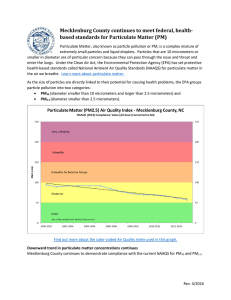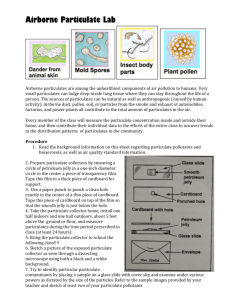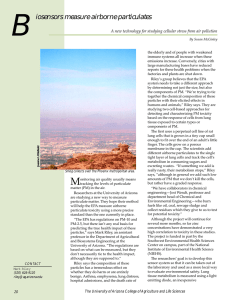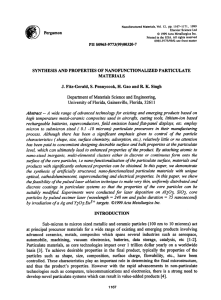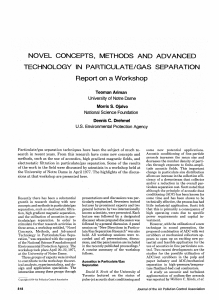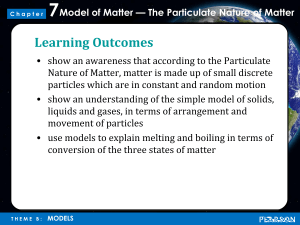Particulate Matter H M - H
advertisement
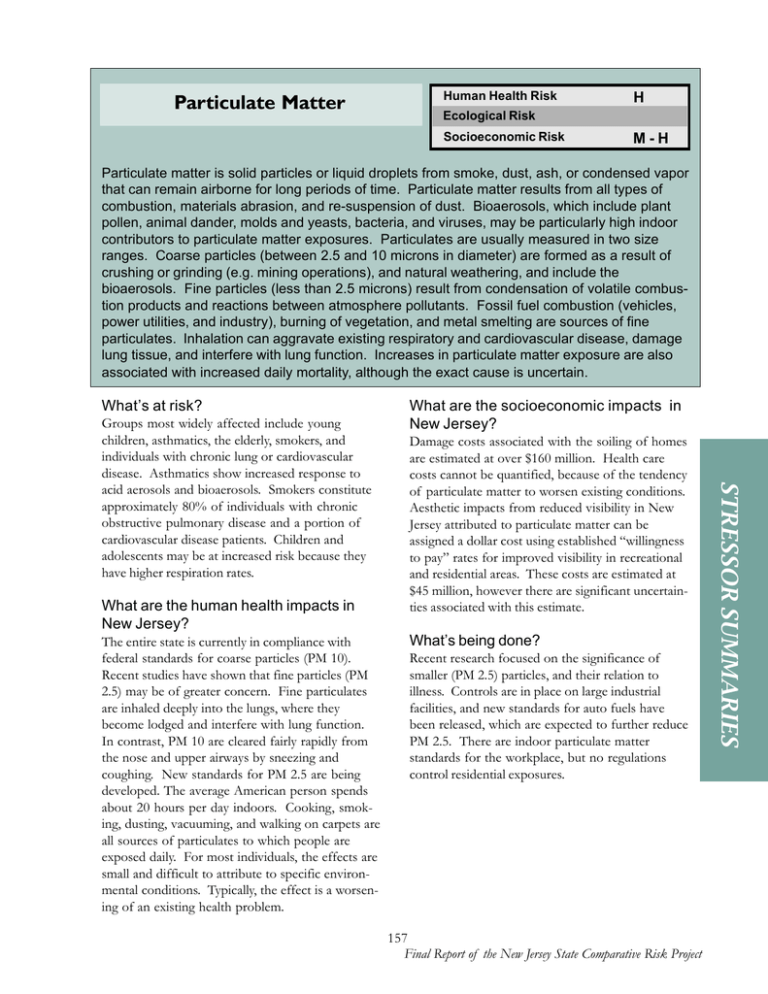
Particulate Matter Human Health Risk H Ecological Risk Socioeconomic Risk M-H Particulate matter is solid particles or liquid droplets from smoke, dust, ash, or condensed vapor that can remain airborne for long periods of time. Particulate matter results from all types of combustion, materials abrasion, and re-suspension of dust. Bioaerosols, which include plant pollen, animal dander, molds and yeasts, bacteria, and viruses, may be particularly high indoor contributors to particulate matter exposures. Particulates are usually measured in two size ranges. Coarse particles (between 2.5 and 10 microns in diameter) are formed as a result of crushing or grinding (e.g. mining operations), and natural weathering, and include the bioaerosols. Fine particles (less than 2.5 microns) result from condensation of volatile combustion products and reactions between atmosphere pollutants. Fossil fuel combustion (vehicles, power utilities, and industry), burning of vegetation, and metal smelting are sources of fine particulates. Inhalation can aggravate existing respiratory and cardiovascular disease, damage lung tissue, and interfere with lung function. Increases in particulate matter exposure are also associated with increased daily mortality, although the exact cause is uncertain. What’s at risk? What are the human health impacts in New Jersey? The entire state is currently in compliance with federal standards for coarse particles (PM 10). Recent studies have shown that fine particles (PM 2.5) may be of greater concern. Fine particulates are inhaled deeply into the lungs, where they become lodged and interfere with lung function. In contrast, PM 10 are cleared fairly rapidly from the nose and upper airways by sneezing and coughing. New standards for PM 2.5 are being developed. The average American person spends about 20 hours per day indoors. Cooking, smoking, dusting, vacuuming, and walking on carpets are all sources of particulates to which people are exposed daily. For most individuals, the effects are small and difficult to attribute to specific environmental conditions. Typically, the effect is a worsening of an existing health problem. Damage costs associated with the soiling of homes are estimated at over $160 million. Health care costs cannot be quantified, because of the tendency of particulate matter to worsen existing conditions. Aesthetic impacts from reduced visibility in New Jersey attributed to particulate matter can be assigned a dollar cost using established “willingness to pay” rates for improved visibility in recreational and residential areas. These costs are estimated at $45 million, however there are significant uncertainties associated with this estimate. What’s being done? Recent research focused on the significance of smaller (PM 2.5) particles, and their relation to illness. Controls are in place on large industrial facilities, and new standards for auto fuels have been released, which are expected to further reduce PM 2.5. There are indoor particulate matter standards for the workplace, but no regulations control residential exposures. 157 Final Report of the New Jersey State Comparative Risk Project STRESSOR SUMMARIES Groups most widely affected include young children, asthmatics, the elderly, smokers, and individuals with chronic lung or cardiovascular disease. Asthmatics show increased response to acid aerosols and bioaerosols. Smokers constitute approximately 80% of individuals with chronic obstructive pulmonary disease and a portion of cardiovascular disease patients. Children and adolescents may be at increased risk because they have higher respiration rates. What are the socioeconomic impacts in New Jersey?
